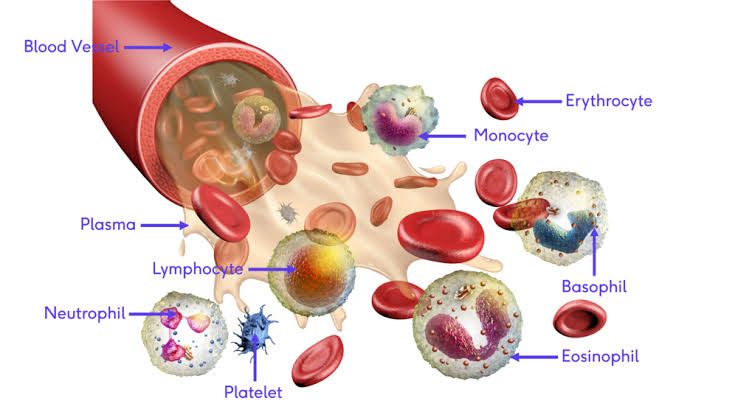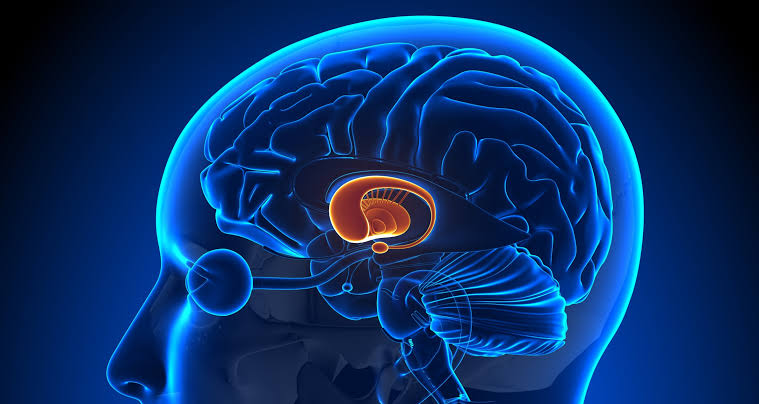
Blood Components
The components of blood can be categorized into several key elements, each serving vital functions in the body. The main components of blood include:
- Plasma
- Plasma is the liquid portion of blood, accounting for about 55% of its volume. It is primarily composed of water (approximately 92%) and contains various substances such as proteins, hormones, glucose, mineral salts, fats, and vitamins.
- Red Blood Cells (RBCs)
- Also known as erythrocytes, red blood cells are responsible for transporting oxygen from the lungs to the rest of the body and returning carbon dioxide back to the lungs for exhalation. They make up a significant portion of blood’s cellular content.
- White Blood Cells (WBCs)
- Known as leukocytes, white blood cells play a crucial role in the immune system by defending the body against infections and foreign invaders. They constitute less than 1% of total blood volume but are essential for immune responses.
- Platelets
- Platelets, or thrombocytes, are small cell fragments that are vital for blood clotting. They help prevent bleeding by aggregating at sites of injury and forming clots.
Classification of Formed Elements of Blood
The formed elements of blood can be classified into three main categories: erythrocytes (red blood cells), leukocytes (white blood cells), and thrombocytes (platelets). Each of these components plays a distinct role in the body’s physiology and immune response.
1. Erythrocytes (Red Blood Cells)
Erythrocytes are the most abundant type of formed element in the blood, accounting for approximately 45% of total blood volume. They are characterized by their biconcave disc shape, which increases their surface area for gas exchange. Erythrocytes lack a nucleus and contain hemoglobin, an iron-rich protein that binds oxygen in the lungs and transports it to tissues throughout the body. The primary function of erythrocytes is to facilitate oxygen delivery and carbon dioxide removal from tissues.
2. Leukocytes (White Blood Cells)
Leukocytes are less numerous than erythrocytes but play a crucial role in the immune system. They can be further classified into two main groups based on the presence or absence of granules in their cytoplasm:
- Granulocytes: These leukocytes contain granules filled with enzymes and other substances that help combat pathogens. Granulocytes include:
- Neutrophils: The most abundant type of white blood cell, neutrophils are primarily involved in phagocytosis, where they engulf and destroy bacteria.
- Eosinophils: These cells are involved in combating parasitic infections and play a role in allergic reactions.
- Basophils: The least common granulocyte, basophils release histamine during allergic responses and help mediate inflammation.
- Agranulocytes: These leukocytes do not have visible granules in their cytoplasm. Agranulocytes include:
- Lymphocytes: Key players in the adaptive immune response, lymphocytes can be further divided into B lymphocytes (which produce antibodies) and T lymphocytes (which destroy infected host cells).
- Monocytes: These large cells migrate into tissues where they differentiate into macrophages or dendritic cells, playing essential roles in phagocytosis and antigen presentation.
3. Thrombocytes (Platelets)
Thrombocytes, or platelets, are not complete cells but rather small fragments derived from megakaryocytes found in bone marrow. Their primary function is to participate in hemostasis—the process that prevents bleeding by forming clots at sites of vascular injury. Platelets become activated upon encountering damaged blood vessels, leading to aggregation and the formation of a temporary platelet plug.
Scientific Basis for Classification
The classification of formed elements is based on both structural characteristics and functional roles within the circulatory system:
- Morphological Characteristics: The physical structure—such as size, shape, presence or absence of granules—provides insight into each cell type’s specific functions.
- Functional Roles: Each category serves distinct physiological purposes; erythrocytes transport gases, leukocytes defend against pathogens, and thrombocytes facilitate clotting.
This classification reflects an evolutionary adaptation that has allowed complex organisms to develop specialized cellular components capable of performing vital functions necessary for survival.
Basic Structure of Erythrocytes
Erythrocytes, commonly known as red blood cells (RBCs), have a unique and specialized structure that is crucial for their primary function of gas transport. The following points outline the key structural features of erythrocytes:
- Shape: Erythrocytes exhibit a biconcave disc shape, which resembles a donut with a thinner center. This shape increases the surface area-to-volume ratio, facilitating efficient gas exchange. The biconcave form allows RBCs to deform as they navigate through narrow capillaries.
- Size: The diameter of mature erythrocytes is consistently around 7-8 micrometers (µm). This size is optimal for passing through the smallest blood vessels and ensures effective circulation throughout the body.
- Anucleate Nature: Mature erythrocytes lack a nucleus and other organelles. During the process of erythropoiesis in the bone marrow, these organelles are extruded to maximize space for hemoglobin, which is essential for oxygen transport.
- Cytoplasm: The cytoplasm of erythrocytes is predominantly filled with hemoglobin, a tetrameric protein composed of four polypeptide subunits (globin chains). Hemoglobin contains iron-bound heme groups that enable reversible binding to oxygen and carbon dioxide.
- Cell Membrane: The cell membrane consists of a lipid bilayer embedded with integral and peripheral proteins:
- Integral Proteins: These proteins span the entire membrane and play roles in binding hemoglobin and anchoring the cytoskeletal network.
- Peripheral Proteins: Located on the inner surface, these proteins contribute to maintaining cell shape and elasticity by forming a mesh-like cytoskeletal structure.
- Surface Antigens: Erythrocyte membranes express specific antigens that determine blood type (ABO system) and Rh factor. These antigens are critical for compatibility in blood transfusions.
Criteria for Identification of Erythrocytes
Identifying erythrocytes involves several criteria based on their morphological characteristics:
- Staining Properties: When stained with hematoxylin and eosin (H&E), erythrocytes appear intensely red due to the acidophilia of hemoglobin, allowing easy visualization under a microscope.
- Shape Confirmation: The characteristic biconcave shape can be observed during microscopic examination, distinguishing them from other cell types.
- Size Measurement: The consistent diameter of 7-8 µm serves as a reference point when identifying RBCs among other cells in blood smears or tissue sections.
- Nuclear Absence: The absence of a nucleus is a definitive feature that helps differentiate erythrocytes from white blood cells (which are nucleated).
- Hemoglobin Content Assessment: Techniques such as spectrophotometry can quantify hemoglobin levels within RBCs, further confirming their identity based on functional capacity.
- Blood Smear Analysis: A peripheral blood smear can be prepared to assess the morphology, distribution, and overall health of erythrocytes in relation to other blood components.
In summary, erythrocytes possess distinct structural features such as their biconcave shape, anucleate nature, hemoglobin-rich cytoplasm, and specific membrane proteins that facilitate their identification through various microscopic techniques.
Comprehensive overview of Components of Cellular Granulocytes
Granulocytes are a type of white blood cell characterized by the presence of granules in their cytoplasm. These granules contain various enzymes and proteins that play crucial roles in the immune response. The main components of cellular granulocytes include:
1. Types of Granulocytes
- Neutrophils: These are the most abundant type of granulocyte, constituting about 60% to 70% of all white blood cells. Neutrophils are primarily responsible for fighting bacterial infections through processes such as phagocytosis (ingestion of pathogens), degranulation (release of antimicrobial substances), and formation of neutrophil extracellular traps (NETs) to trap and kill microbes.
- Eosinophils: Comprising about 1% to 3% of white blood cells, eosinophils are involved in combating parasitic infections and play a role in allergic reactions. They contain granules filled with enzymes like major basic protein and eosinophil peroxidase, which are toxic to parasites and contribute to inflammatory responses.
- Basophils: Making up approximately 0.4% to 1% of white blood cells, basophils release histamine and other mediators during allergic reactions and asthma episodes. Their granules contain heparin (an anticoagulant) and histamine, which help modulate inflammatory responses.
2. Granules
- Granulocytes contain specific granules that store various enzymes and proteins essential for their function:
- Proteolytic Enzymes: These enzymes break down proteins from pathogens or damaged tissues.
- Antimicrobial Proteins: Such as defensins, which disrupt microbial membranes.
- Cytokines: Signaling molecules that mediate inflammation and recruit other immune cells to sites of infection or injury.
3. Cytoplasm
- The cytoplasm of granulocytes is rich in organelles that support their metabolic activities:
- Mitochondria: Provide energy necessary for cellular functions.
- Endoplasmic Reticulum (ER): Involved in synthesizing proteins, including those found in granules.
4. Nucleus
- Granulocytes have a unique polymorphonuclear structure, meaning their nuclei can be segmented into multiple lobes connected by thin strands of chromatin. This morphology is particularly characteristic of neutrophils but also applies to eosinophils and basophils.
5. Surface Receptors
- Granulocytes possess various receptors on their surface that allow them to detect pathogens or signals from other immune cells:
- Pattern Recognition Receptors (PRRs): Recognize pathogen-associated molecular patterns (PAMPs) on microbes.
- Chemokine Receptors: Help guide granulocytes to sites of infection or inflammation by responding to chemokines released by damaged tissues or other immune cells.
In summary, the components of cellular granulocytes include different types such as neutrophils, eosinophils, and basophils; specialized granules containing enzymes and antimicrobial agents; a cytoplasm rich in organelles; a segmented nucleus; and surface receptors that facilitate their immune functions.







